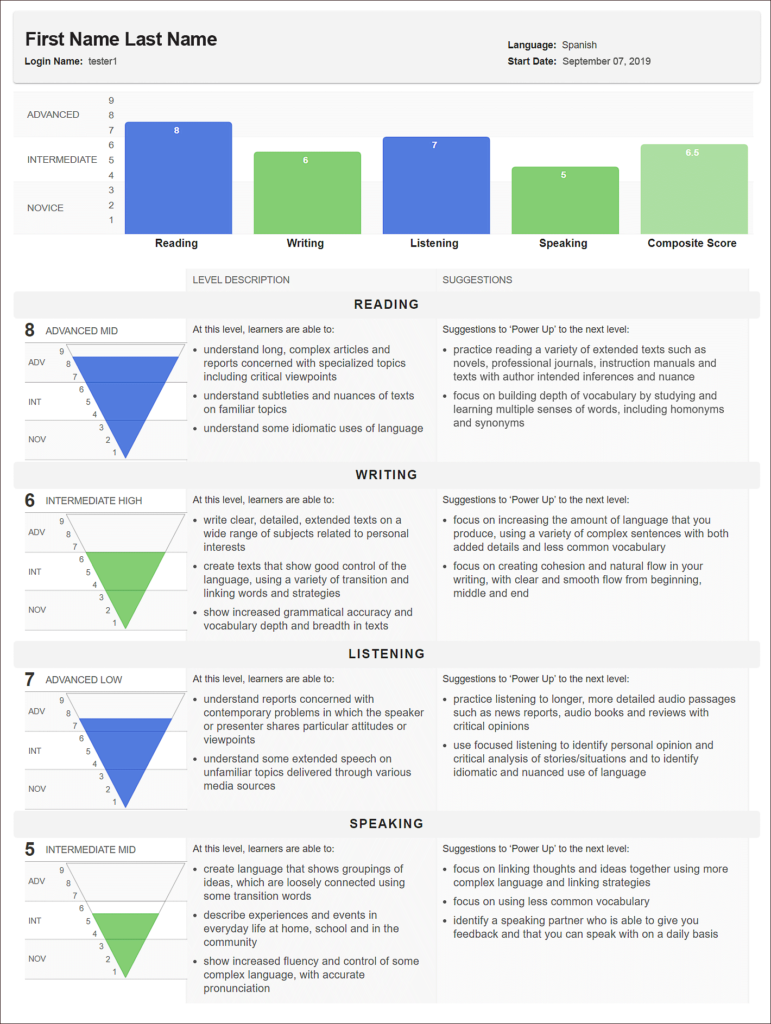Avant STAMP Overview
Avant STAMP 4S is a internationally-recognized web-based test that assesses language proficiency. It has 4 sections: Reading, Writing, Listening and Speaking.
Each test taker should read through the Test Taker Guide.
~30道选择题
3 个提示
~30道选择题
3 个提示
How the Test Works
Reading and Listening questions are multiple-choice and are scored automatically. The test is computer adaptive which means it will get easier or harder based on the test taker’s responses.
Writing and Speaking prompts will be made more or less difficult based on how well the test taker does in the Reading and Listening sections. Responses are rated by Avant Certified Raters who use a Scoring Rubric that lists the criteria for meeting Benchmark Levels.
自动评分
人类评级
测试规则
- Do not click outside the test window. This is tracked and will log you out of the test.
- Do not use any support materials (e.g., dictionaries, textbooks, cell phones, apps, messaging tools, or translation aids such as Google Translate).
- Do not take notes (paper-based or electronic). Paper, pens, pencils, styluses, etc. are not allowed.
- Do not read/use any notes or support materials for your speaking/expressive responses.
- Do not communicate with anyone except the proctor during the test.
- Do not share test questions or prompts. Do not copy, print, or take screenshots of the test.
- Do not use violent, profane, or inappropriate language in your responses.
Preparing for the Test
Avant STAMP is a proficiency test of what the test taker can do with the language at this point in time. There are no “right” or “wrong” answers, simply a demonstration of their skills.
To help each test taker prepare, we do have several resources to help:
测试样本
Shows what the test will look like and gives examples of Novice, Intermediate, and Advanced questions and prompts. It does not show the computer-adaptive nature of the test and will not give a score at the end.
视频教程
Helps the test taker understand how to do their best and what to expect during testing.
写作实例
For many languages, we provide real examples of writing responses for each level. Test takers can compare what they know to understand what type of language is expected at each level.
Benchmarks and Rubrics
This guide helps to understand how the test is scored and provides question topics that might be used at each level in the Reading and Listening sections.
评估结果
After scoring is completed, results will be provided to the school or organization administering the test.
The report shows how your student performed in each skill (Reading, Writing, Listening, Speaking) and gives an overall (composite) score.
For a detailed explanation of how scores are determined, see the Benchmark and Rubric Guide, which describes what is expected at each level. If you have questions about an individual student’s scores, please contact the school or organization that gave the test.
了解分数
The Individual Report shows the score earned for each skill, along with a Composite Score.

Score Pyramid
An inverted pyramid graphic displays each score. The filled section shows the level reached.
- For Writing and Speaking, an extra shaded area may appear if one response was scored at a higher level.
- This indicates the student may be performing across a range of proficiency levels for that skill.
Skill Descriptions
Next to the pyramid, you’ll see descriptions of the skill (Reading, Writing, Listening, Speaking) and the level category (Novice, Intermediate, Advanced).
- If a test section wasn’t finished, this area will instead show the status: Not Started or In Progress.

Power Up Suggestions
On the far right, the report lists Power Up Suggestions—practical tips the student can use to improve and reach higher scores in that skill.

要进一步了解个人报告分数,请参阅《基准和评分标准指南》。评分标准详细列出了对考生在任何特定水平上的表现的期望。有关特定考生分数的更多信息,请联系实施测试的机构。
